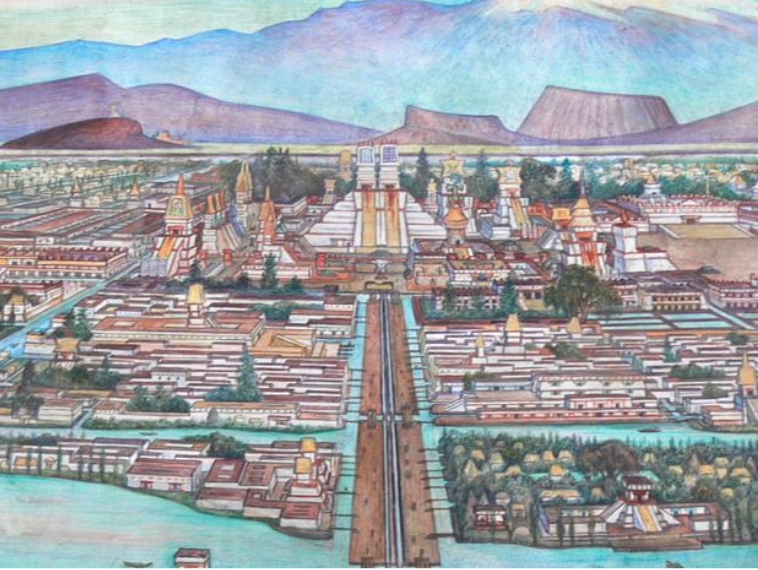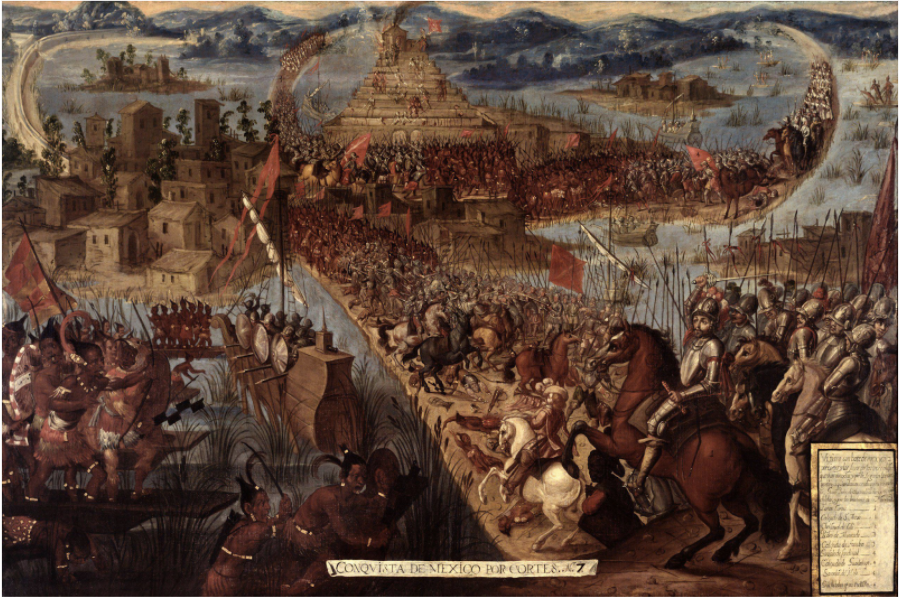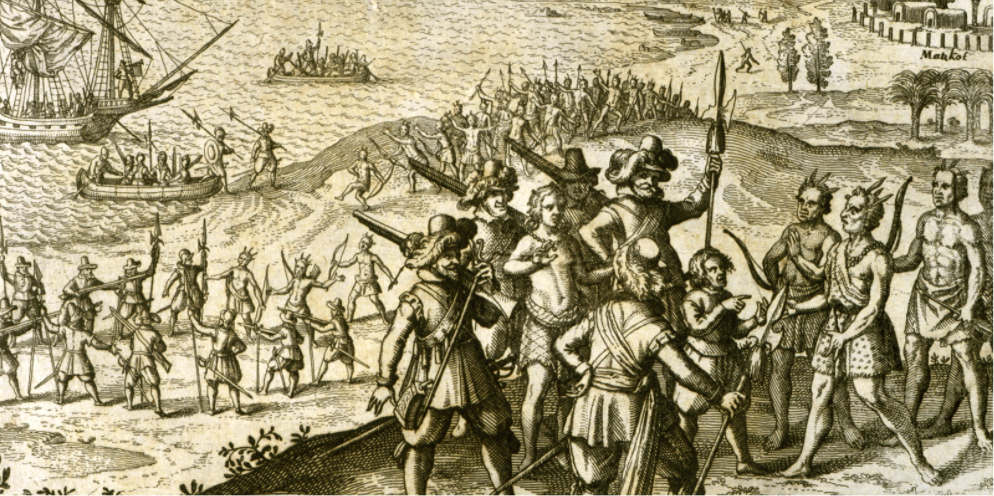|
The complex racial chart of Spanish America that categorized the different names and looks of kids who had parents of different races.
|
The Aztec capital, Tenochtitlan, which had advanced architecture and housed over a quarter of a million people.
|
The Spanish conquest of the Aztec capital, Tenochtitlan, in 1521.
|
Before the arrival of the Spanish in the Americas, many native cultures prospered and flourished. Among these, there were 3 powerful empires that ruled large swaths of land. The Incas controlled the Andes Mountain Range in Peru, ruling over 12 million people. The Mayans, who resided on the Yucatan Peninsula, established 40 major cities during their peak from 250-900 A.D. Lastly, the Aztecs, who lived in the Valley of Mexico, created one of the largest cities in the world at the time, Tenochtitlan, with a population of 250,000. These civilizations prospered with monumental architecture, beautiful art pieces, advanced mathematics, and astronomy that rivaled or surpassed the ones in Europe. However, after the Spanish conquered these empires, their cultures and ways of life were erased as the Spanish forced theirs instead.
The first Spanish colonizers in America were almost all men. Because of this, they ended up breeding with the natives, which caused racial mixing. This led to many different ethnic groups, such as the mestizos, the children of Spaniards and Native Americans, and mulados, the children of Spaniards and Africans. All of these races ruled under a caste system with pure Spaniards at the top and black and native people at the bottom. After Napoleon conquered Spain in 1808, its colonies broke off and declared independence. When the old Spanish monarchy was reinstated, they tried to send armies to crush the rebels, but Spain was weakened so much by Napoleon that they could not afford another long war, leading to all of the colonies gaining independence.






